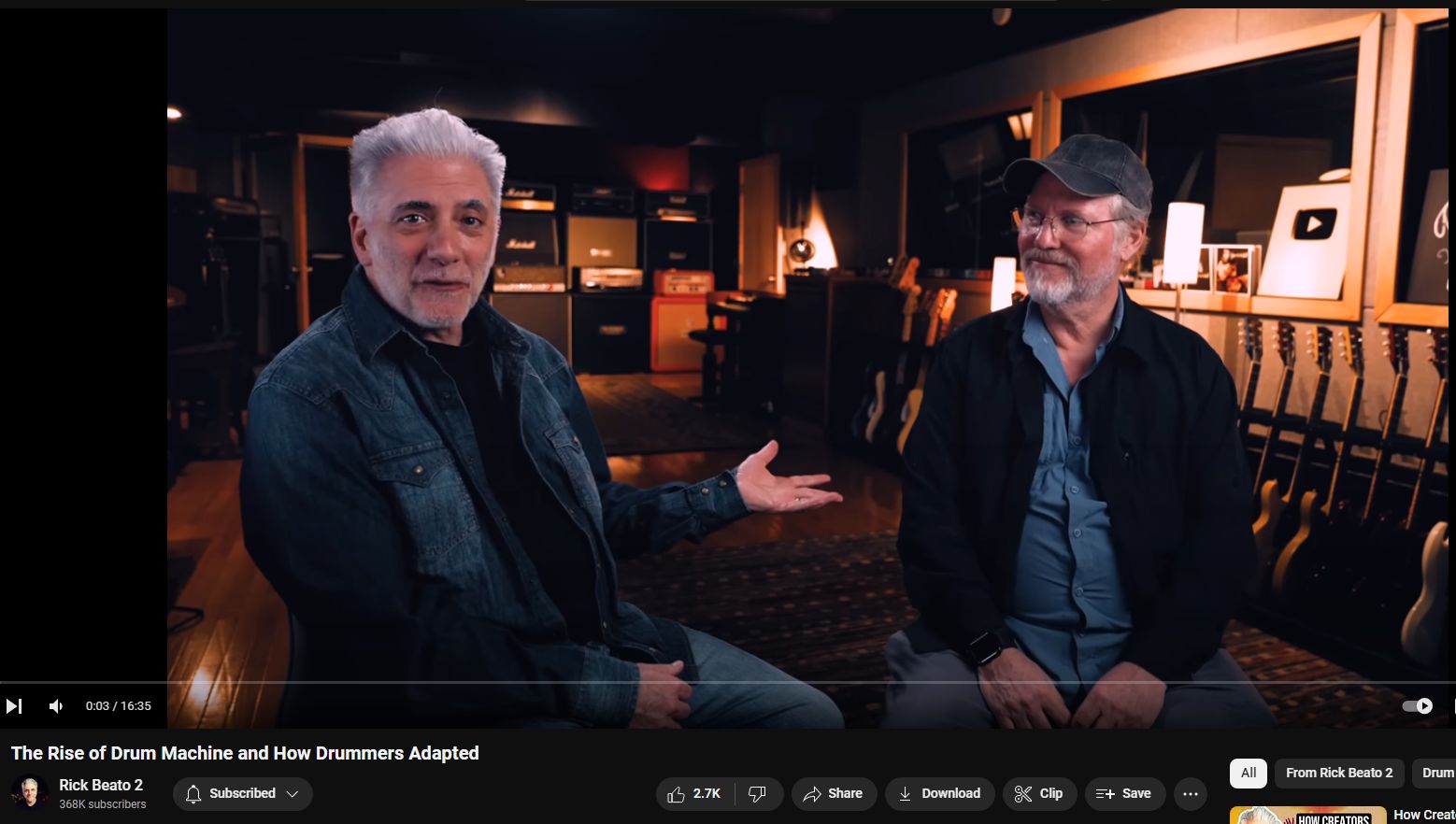MIDI DRUMS LOL
From the outset of MIDI, most prognostications predicted demise of all drummers, ‘pretty soon’. This was wishful thinking. Drummers became even more valued as the awfulness of electronica and ‘MIDI musak’ was painfully discovered. This is good, because it’s still horrible to haul around the kit! Turns out the imperfections are most valued.

MIDI DRUMS LOL
The history of MIDI (Musical Instrument Digital Interface) drum machines is an integral part of the broader evolution of electronic music production. Since MIDI’s introduction in the early 1980s, drum machines that utilize this protocol have become staples in studios, live performances, and bedroom production setups worldwide. Here’s an overview of the development of MIDI drum machines:
The Pre-MIDI Era
Before MIDI, drum machines were standalone devices with preset patterns or programmable capabilities. Early models like the Roland CR-78 and the Linn LM-1 Drum Computer were groundbreaking, offering musicians electronic rhythm accompaniment with a level of realism and control previously unavailable. These machines, however, lacked easy integration with other electronic instruments and recording equipment.
The Advent of MIDI
MIDI was introduced in 1983 as a collaborative effort among leading synthesizer manufacturers, including Roland, Yamaha, Korg, and Sequential Circuits. MIDI allowed electronic musical instruments, computers, and other devices to communicate and synchronize with each other, revolutionizing music production and performance.
The Rise of MIDI Drum Machines
With the adoption of MIDI, drum machines became more versatile and integrated components of electronic music setups. The ability to synchronize drum machines with synthesizers, sequencers, and computers opened up new possibilities for composition, arrangement, and live performance. Notable MIDI-equipped drum machines from the mid-1980s and beyond include:
– Roland TR-707 and TR-727: Among the first drum machines to feature MIDI connectivity, allowing them to easily integrate with other MIDI gear.
– Yamaha RX Series: The RX5 and other models in the series were popular for their realistic drum sounds and MIDI capabilities.
– Alesis HR-16: Released in the late 1980s, it became a favorite due to its affordability, sound quality, and MIDI functionality.
– Akai MPC Series: Starting with the MPC60 in 1988, the MPC series combined sampling capabilities with MIDI sequencing, becoming central to the production of hip-hop, electronic, and dance music.
Impact on Music Production
MIDI drum machines transformed music production by facilitating complex, precise, and dynamic drum programming. They also allowed for greater experimentation with rhythm, leading to the development of new genres and subgenres. The integration capabilities of MIDI meant that drum machines could be part of a larger, more complex setup, enabling producers and musicians to control multiple devices from a single interface.
Modern Developments
Today, while hardware drum machines continue to be popular, software-based drum machines and drum plugins have become prevalent due to advances in computer music production. Modern DAWs (Digital Audio Workstations) come equipped with sophisticated drum programming capabilities, and MIDI controllers can trigger both hardware and software instruments, blurring the lines between traditional drum machines and computer-based production.
Despite these advancements, classic MIDI drum machines are still cherished for their unique sounds and tactile interfaces. Many contemporary models pay homage to their predecessors by incorporating vintage sounds with modern features like USB MIDI, expanded memory, and integrated effects.
Conclusion
The history of MIDI drum machines reflects the broader narrative of technological innovation in music production. From standalone rhythm boxes to integral components of the digital music ecosystem, MIDI drum machines have played a pivotal role in shaping the sound of modern music. Their evolution continues to inspire both nostalgia and innovation in the music production community.